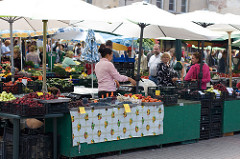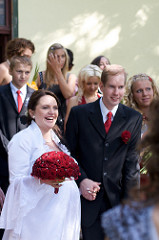Twitter being the source of all good things nowadays (at least according to “social media experts”), I posted a question to my huge list of followers for ideas to write a blog entry about. Parsing through all the suggestion (1), I found the best idea from KT:
tisfan: @gothmog talk about how you got into photography?
Good ideas coming from KT are not unexpected as she is a far more prolific writer than I am with her blog, The Hungry Little Caterpillar and other non-web-enabled writings. So, I will embrace her question and try to do my best.
My first memory of photography was taking the occasional picture with my father’s SLR when I was very young. I don’t remember any of the pictures I took (there may not even have been film in the camera). I do have rather distinct memories of the mechanism of the camera. The manual film advance lever; the wonder of what lenses could do; the split screen focusing through the viewfinder. As a budding geek, the pure mechanics provided wonder to me that made the act of taking photographs irrelevant. My father had a box of glass lenses (why, I don’t know) that I would play with for hours exploring the various properties of convex and concave lenses. And by “properties” I do not mean solar destruction of insects; I got a fresnel lens later for that.
At some point before I was less than 10, I got a 110 film camera. I really remember nothing of the camera or any pictures I took with it, but I do remember the weird film cartridges that it used. It was a very very basic camera with manual advance and no adjustments, just point and click. I think it might have used the “single use” flash cubes, but I could be wrong.

When I was about 10 years old, I got my first 35mm camera. It was a Canon Snappy S, and it was red. I thought it was the best thing ever. I found some photos I took with it including ones that I took on a school trip to Quebec City (the waterfall to the left are the Montmorency Falls). I still have the camera; it is in my closet. It was a fully automatic camera, but it had a cool rotating lens cover that I was enamored of. I don’t remember spending much energy taking pictures at the time; I have only a few rolls of developed film.

While I did take a few photos during high school (mostly while I was at governor’s school), I stopped through college. I don’t really know why, there were just so many other things going on; I lost interest. My reintroduction to photography came in step with the digital camera revolution. But, as I look back over those images there is an inkling of my later photography topics with lots of nature shots; waterfalls, rainbows, and sunsets.

In 2001, I purchased my first digital camera, a Canon Powershot Digital Elph S110 (Canon has a way with names). I still have it and use it today especially given that I have a waterproof case for it. There are pictures in my cruise album from snorkeling and river tubing taken with it. It was, and is, a great camera. At about the same time as I bought the camera, Elizabeth and I planted lots of flowers in the front yard (photos). These flowers became subject for my budding photography.
This camera went on many a trip with me; my first cruise, Washington DC, Ocean City, Atlanta, GA, and many more, but in the end, I started getting frustrated with the limited capabilities of a fully automatic camera. I think the difficulty in taking macro photographs bothered me the most. It was not the fault of my little camera, but without having control over focus, things just got hard. I remember trying to take pictures by holding my hand where I wanted the focus point to be and then moving it to take the shot. Not a recipe for great photos.
So, on July 23rd, 2006 I ordered my lovely DSLR, a Canon EOS 20D with 17-85mm f/4-5.6 IS USM lens (yes, I found the Amazon order confirmation email). I’m pretty sure I can credit Tiffany for getting interested in having an SLR as she talked quite a lot about her photography classes in college. I’ll also freely admit that it was a cool, geek toy. At that time, having a DSLR was not very common and I liked having a new thing. But once I started using it, I fell in love with it. I remember one of my first photo trips was wandering around campus and I saw a bunny near Swem Library. I was able to track it with the camera and using the rapid shot get several frames of it running away. That was something I could never have done with my old camera.

While there have certainly been ebbs and flows in my photography, it is an art form that I really love. Part of that love comes from the fact that I am reasonably good at it. It has allowed me to capture things which are purely artistic, but I am also able to capture and save the memory of other activities I love, whether it be cooking, travel, or my friends. It is also wonderful to have someone I love who shares my interest. Tiffany and I can reliably spend hours wandering around a park, botanical garden, or Colonial Williamsburg boring anyone who is with us as we investigate a cool shadow or reflection. So I think that is the true answer to KT’s question. I started and continue having a passion for photography because it helps me capture and save the things I love in the world.








